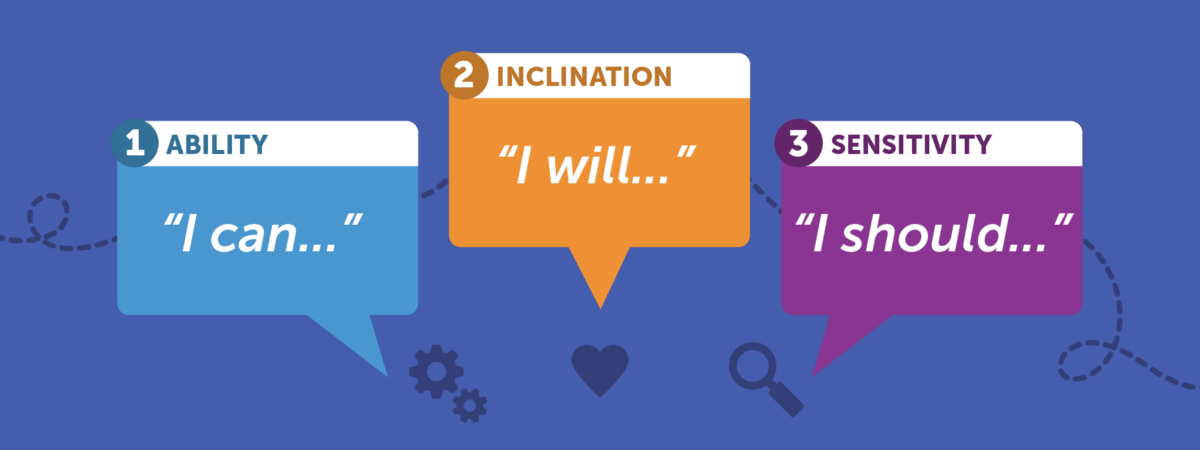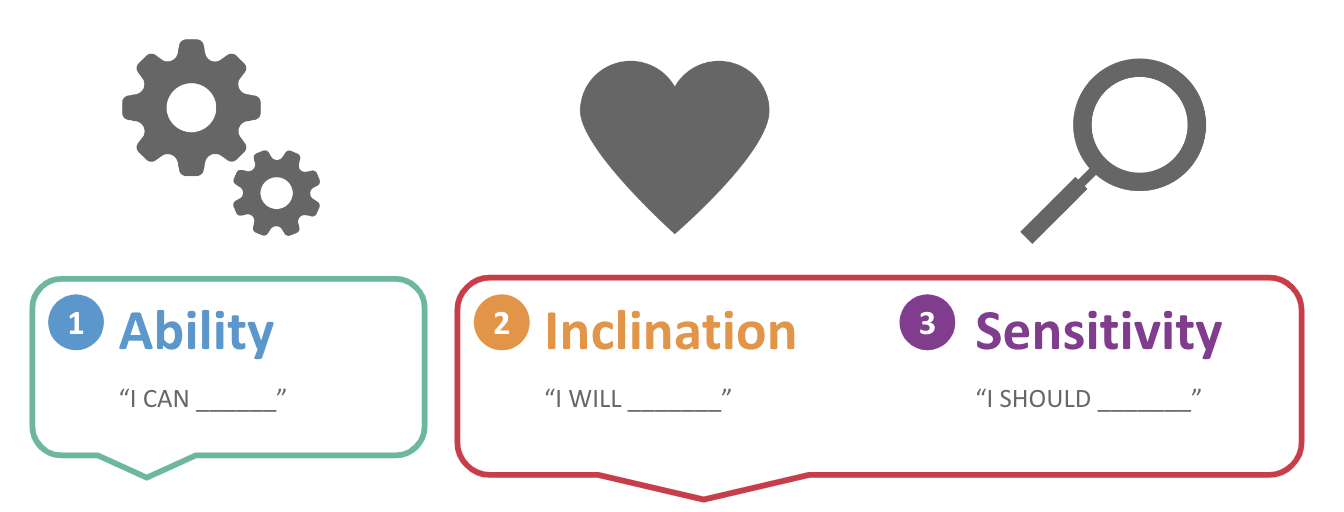
Portrait of a Graduate domains can be viewed as Thinking Dispositions. Project Zero defines thinking dispositions as “a tendency toward a particular pattern of intellectual behavior.” However, they also point out that “research has revealed that often learners possess thinking abilities in these areas, but aren’t disposed to use them.”
Developing thinking dispositions requires cultivating three elements: Ability, Inclination, and Sensitivity (Figure 1).

Figure 1. Fostering ability, inclination and sensitivity ensures students are comfortable applying and adapting essential skills in different contexts
Most learning and assessment models ONLY consider ability, and would consider a skill “mastered” once only ability is proven. However, once mastered, if the learner does not choose to use the skill when the opportunity presents; or, if they fail to see when using the skill could serve a purpose, the real world implications are the same as if they do not have the ability to perform the skill at all.
Thinking Dispositions are particularly relevant for Portrait of a Graduate domains because the identified attributes are dispositional. That is, mastery alone does not ensure application of skills when appropriate. For example, one attribute that many school districts identified as part of their Portrait of a Graduate was “Practice Self-Awareness and Management.” Students need to be able to (1) be capable of engaging in self-awareness, (2) be motivated and see value in their self-awareness practices, and (3) recognize situations in which being self-aware is appropriate and advantageous.
Cultivating inclination and sensitivity, in addition to ability, is essential for school leaders to consider as they work to operationalize the attributes in Portrait of a Graduate. For these essential cross-cutting skills, they must look beyond core academic content that prioritizes disciplinary knowledge, and traditional tests that only consider ability.
Digital Promise has identified the following approaches to support students to develop inclination and sensitivity in choosing to apply Portrait of a Graduate skillsets when applicable.
Integrated Learning Pathways help students find opportunities (sensitivity) to apply transferable skills in any context. Partnering with districts from across the nation, we have designed a process to crosswalk portrait domains to relevant competencies across core disciplines. Integrating relevant practices across subject and grade level curricula create opportunities to develop sensitivity to use their developing dispositions in various contexts and to recognize when and how to apply new skills and dispositions in any situation.
Whole Child Pedagogy helps students build confidence, value, and joy (inclination) in their skills through engaging and relevant powerful learning experiences. Inclusive and experiential pedagogies help learners find belonging, confidence, and joy in their new skills and dispositions, increasing inclination to apply them. Educators can design powerful student learning experiences by utilizing project and challenge-based methods with culturally sustaining and responsive pedagogies. When we also account for every learner’s variability across a whole child framework, an understanding of the dispositional factors that affect learning can provide valuable insight to support the complex needs of learners.

Digital Promise is developing processes, practices, and resources for school districts to be better able to articulate and integrate these domains in practice, in ways that acknowledge learners’ inclination and sensitivity. Over the next several months, we will share more of what we have learned about the Graduate Portrait, our emerging research and development into best practices to make these portraits more actionable, and opportunities to partner with us so we can continue to learn from each other.
To receive timely updates on this work please subscribe to our Action Report newsletter.